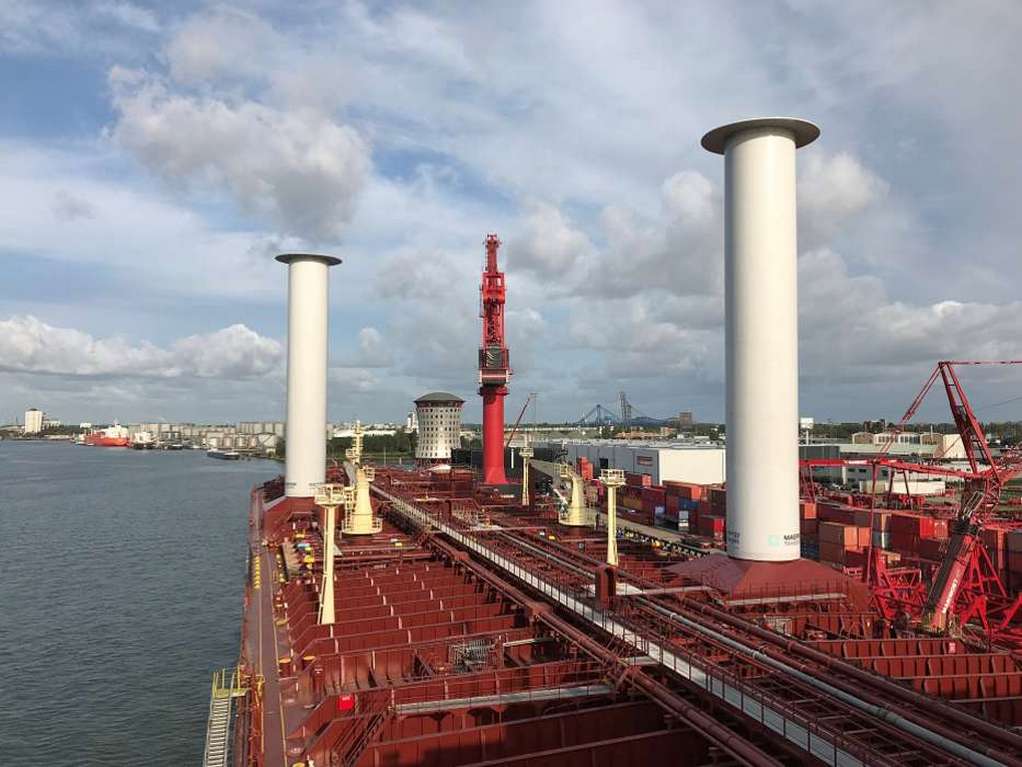With decarbonisation technology front and centre at the IMO’s MEPC 80 in July, Rotor Sails are now proving a viable option for ship owners and managers looking to reduce their emissions and fuel consumption, argues Kim Diederichsen, Chief Executive Officer, Anemoi Marine Technologies.
Wind propulsion is set to be front and centre at the International Maritime Organization’s (IMO’s) 80th Session of the Marine Environmental Protection Committee (MEPC) in July, which will examine the readiness and availability of low and zero-carbon technologies to reduce the shipping sector’s impact on global emissions and speed up global decarbonisation efforts.
Rotor Sails, traditionally known as Flettner Rotors, will very much be a part of that conversation as the technology continues to grow in size, scope, credibility and, most importantly, demand.
Although first developed 100 years ago, Rotor Sails had been discounted in commercial shipping at the time, mostly due to the low cost and plentiful supply of fuel. However, with shipowners and managers looking to wean their way off traditional bunker fuels while maintaining full operations, these tall cylinders have picked up steam in recent years as a way to provide auxiliary propulsion and reduce fuel consumption.
The whole principal of Rotor Sails relies on an aerodynamic phenomenon known as the ‘Magnus Effect’. As the cylinder rotates within an airflow, a forward thrust force perpendicular to the apparent wind direction is created, which delivers additional thrust to the vessel. The thrust generated can either provide additional vessel speed or maintain vessel speed by reducing power from the main engine. Either way, a vessel’s fuel consumption can be minimised and, crucially, its emissions output drastically cut.
Rotor Sails also help address new environmental regulations from the IMO: the Carbon Intensity Indicator (CII) and the Energy Efficiency Existing Ship Index (EEXI). Both are driving the shipping industry’s push to decarbonise, with the ultimate goal of reaching net zero.
Data from modern Rotor Sail systems has shown that the technology can achieve fuel savings of up to 30%. This means Rotor Sails are one of the most effective and sustainable solutions for today’s shipping industry, as well as being cost effective.
As an example, a 310,000-dwt very-large crude carrier trading the Bonny-Ningbo route and fitted with five Rotor Sails has been shown to produce an annual fuel and emission saving of 13.5%, which equates to 1,622 tonnes of fuel and 5,044 tonnes of carbon saved each year.
Importantly, Rotor Sails are suitable for almost all types of deep-sea vessels. Their varying designs and installation methods means they have been installed on bulk carriers and tankers, with new designs eying up ferries, roll-on/roll-off vessels and multipurpose vessels. In fact, most modern Rotor Sails are designed in such a way that they can be optimised for every vessel. Crucially, modern Rotor Sails can easily be incorporated into the design of a newbuilding, as well as being easy to retrofit on existing vessels without the need to drydock.
The market for Rotor Sails is also expected to take off as shipowners increase their efforts to meet the IMO’s target of reducing greenhouse gas emissions by 50% compared to 2008 levels. According to the UK’s Clean Maritime Plan, the market for wind propulsion technologies, including Rotor Sails, is projected to reach £2 billion per year by 2050, a significant increase from £300 million that is expected in the 2020s.
This growth is directly linked to the credibility of Rotor Sails as a decarbonisation technology. As alternative fuels and other eco-friendly innovations become market ready, auxiliary wind propulsion methods can be used in conjunction to reap even more environmental benefits for the shipping sector.
With the IMO’s MEPC 80 session looking closely at the readiness of emerging technologies, today’s modern Rotor Sails have now achieved enough maturity to make them a credible option to tackle shipping’s climate challenge and ensuring they are a major point of discussion for the next three decades.
Tags: Climate Change, IMO, Rotor Sails

Recent Posts
IHI admits improper alteration of data over 4,000 marine engines
Shipowners welcome 40% production benchmark
MPCC opts for 2 methanol dual-fuel ships
WinGD to debut short-stroke engine design
MarineDOT cuts fuel consumption by 100,000 gallons using ABB technology
CMA CGM invests $214m in shipping decarbonisation
SEB adds shipping to 2030 net zero target
MB Shipbrokers and Azolla create decarbonisation solution